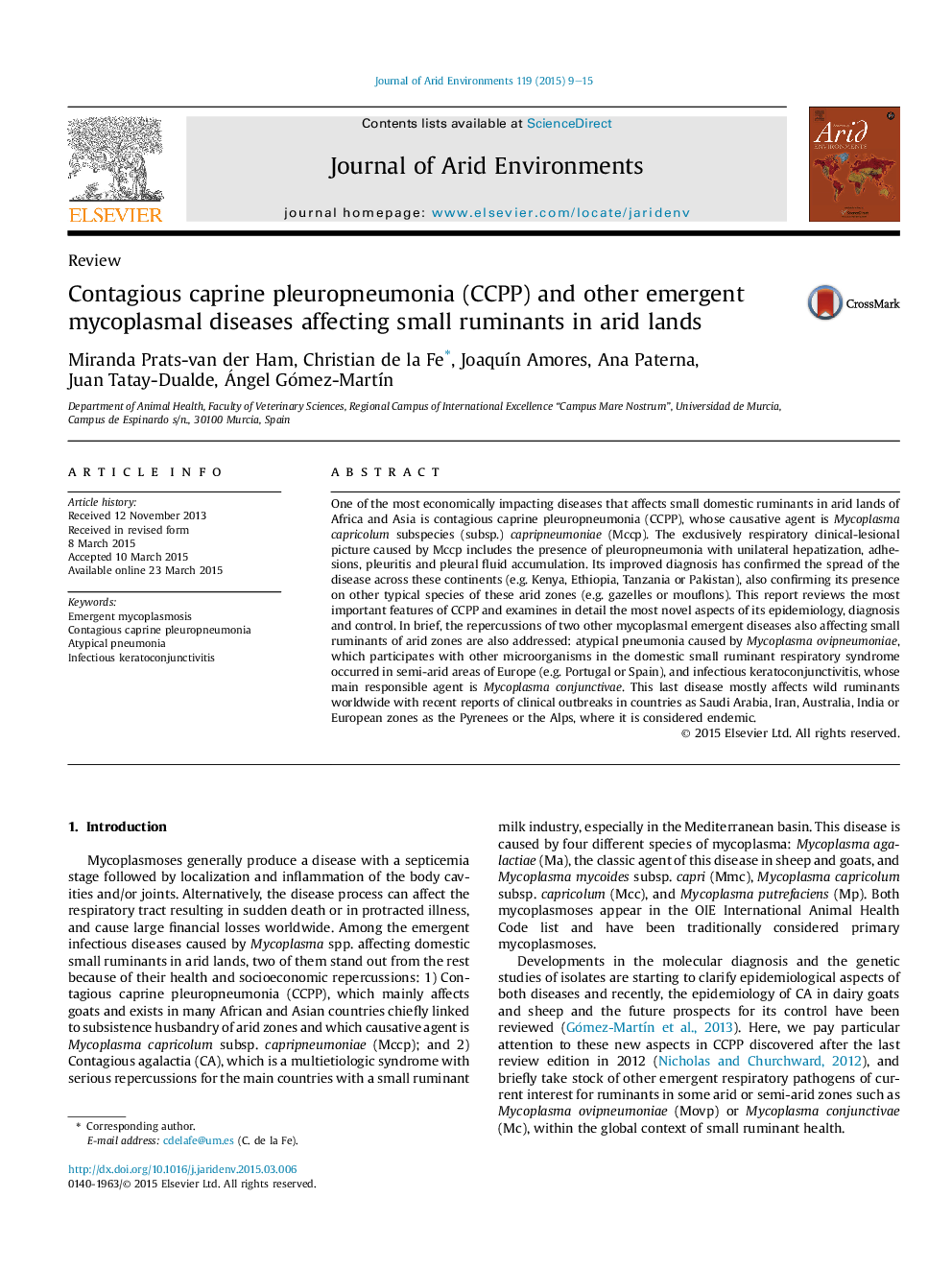| Article ID | Journal | Published Year | Pages | File Type |
|---|---|---|---|---|
| 6303408 | Journal of Arid Environments | 2015 | 7 Pages |
â¢Economically impacting emergent mycoplasmosis affecting small ruminants in arid zones.â¢Contagious caprine pleuropneumonia (CCPP).â¢Atypical pneumonia caused by Mycoplasma ovipneumoniae.â¢Infectious keratoconjunctivitis.â¢Advances in epidemiology and control.
One of the most economically impacting diseases that affects small domestic ruminants in arid lands of Africa and Asia is contagious caprine pleuropneumonia (CCPP), whose causative agent is Mycoplasma capricolum subspecies (subsp.) capripneumoniae (Mccp). The exclusively respiratory clinical-lesional picture caused by Mccp includes the presence of pleuropneumonia with unilateral hepatization, adhesions, pleuritis and pleural fluid accumulation. Its improved diagnosis has confirmed the spread of the disease across these continents (e.g. Kenya, Ethiopia, Tanzania or Pakistan), also confirming its presence on other typical species of these arid zones (e.g. gazelles or mouflons). This report reviews the most important features of CCPP and examines in detail the most novel aspects of its epidemiology, diagnosis and control. In brief, the repercussions of two other mycoplasmal emergent diseases also affecting small ruminants of arid zones are also addressed: atypical pneumonia caused by Mycoplasma ovipneumoniae, which participates with other microorganisms in the domestic small ruminant respiratory syndrome occurred in semi-arid areas of Europe (e.g. Portugal or Spain), and infectious keratoconjunctivitis, whose main responsible agent is Mycoplasma conjunctivae. This last disease mostly affects wild ruminants worldwide with recent reports of clinical outbreaks in countries as Saudi Arabia, Iran, Australia, India or European zones as the Pyrenees or the Alps, where it is considered endemic.
